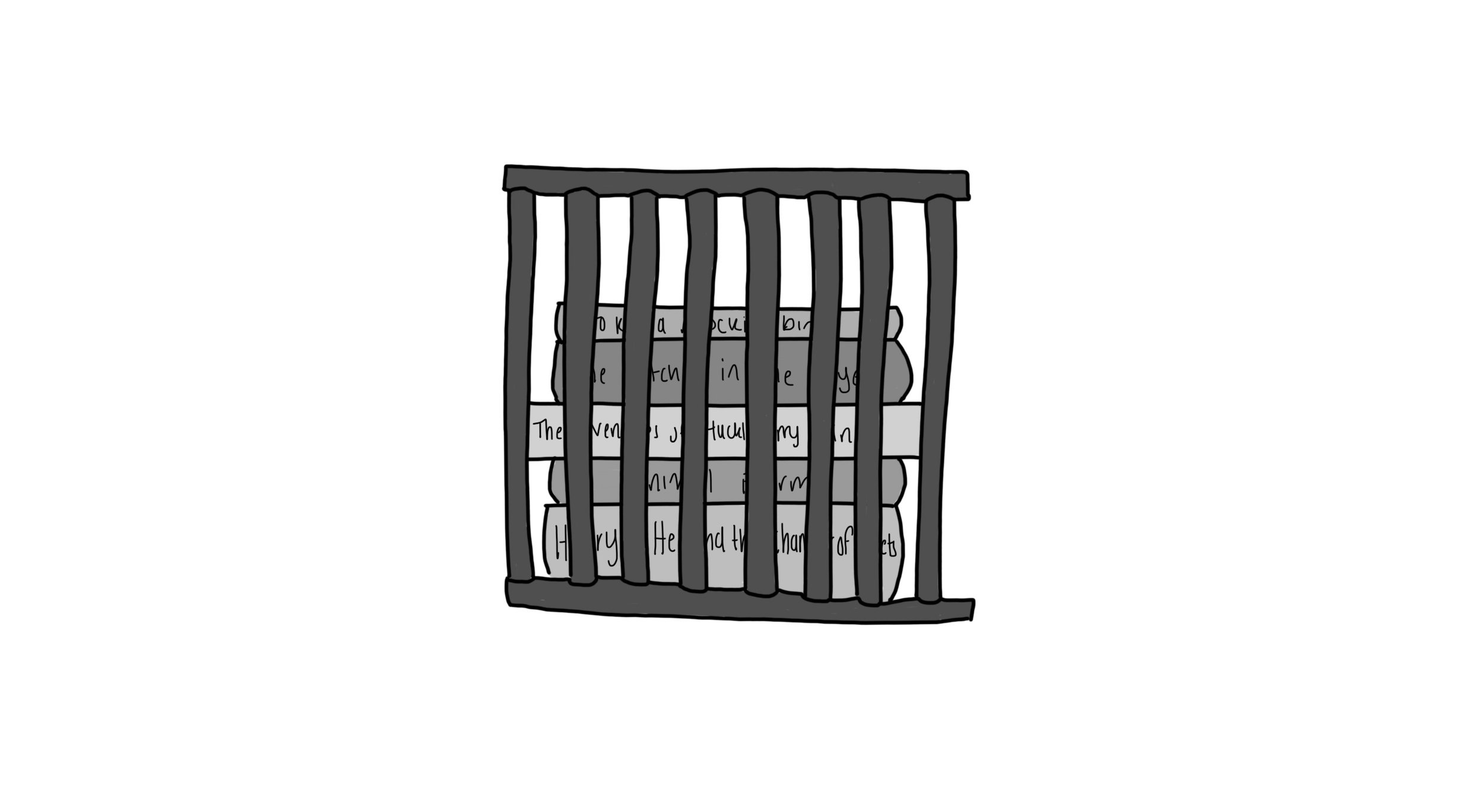Graphic by Penelope Taylor ’20
BY CHLOE JENSEN ’20
As the nation with the highest incarceration rate in the world according to the Population Reference Bureau, the United States is no stranger to the mistreatment of prisoners. With the United States’ problem with incarceration comes another issue: the lack of information that prisoners receive. At the end of last year, several states including Texas and New York began banning books in their prisons. Although these laws have operated in several states for many years, Texas’ recent bill received special attention for banning more than 10,000 books. New York’s bill was even more extreme: the state now is only allowing books from five vendors, which greatly limits the number of books prisoners can read and the knowledge they can acquire, according to Newsweek.
To a lesser degree, prison book banning has been in place for a long time to ensure the safety and wellbeing of prisoners. In previous cases, the banned books only included books with detailed instructions about criminal activity or explicitly lewd content.
With recent bans, this is simply no longer the case. Although many prison guards claim that these rules are in place to prevent further criminal activity within the cell walls, many of the titles suggest otherwise. Among the list of banned books in a Texas prison, for example, were “The Color Purple,” “Memoirs of a Geisha” and even an atlas and a coloring book; however, the list of banned books does not include “Mein Kampf,” or any books by David Duke, the leader of the Ku Klux Klan, according to the New York Times.
Another book that both New York’s and Texas’ prison systems banned was “The New Jim Crow,” a book that is known for its suggestion that systemic racism in the post-segregation era takes place not with separate bathrooms, but through the mass incarceration of black people. Through banning books and other mediums, the New York and Texas state prison systems are defining their idea of “safety” around ensuring that its prisoners, and specifically its prisoners of color, have as little information as possible about their societal status and their mistreatment.
Without access to their family, friends and mass media, many inmates feel isolated. Books are one of the few ways inmates can connect with the outside world. Renigald Dwayne Betts, a former inmate, said that books “became magic” and “helped him learn what it means to be human,” according to a New York Times article. Having access to information and being able to learn about new subjects also helps inmates transition back into society.
The United States lags behind many other nations in terms of its treatment of prisoners, and these book rules do not help. Upon release, former inmates in the United States have a challenging time re-adjusting to society. Often, they struggle with unemployment and lack of education. According to the Bureau of Justice Statistics, around three out of four prisoners are charged with crimes within five years after their release.
While many states are following the lead of New York and Texas, organizations like Books to Prisoners seek to solve this issue by “mailing tens of thousands of free books to inmates across the country each year,” according to their mission statement. However, if legislature bans books, these organizations will be of very little use.
In many ways, excessive prison book banning laws, including the two in Texas and New York, are human rights violations. Without access to the outside world, inmates and former inmates face even more challenges with literacy and re-adjustment to society. If lawmakers are interested in the livelihood of inmates, and the wellbeing of society in general, they must rethink these bans.

